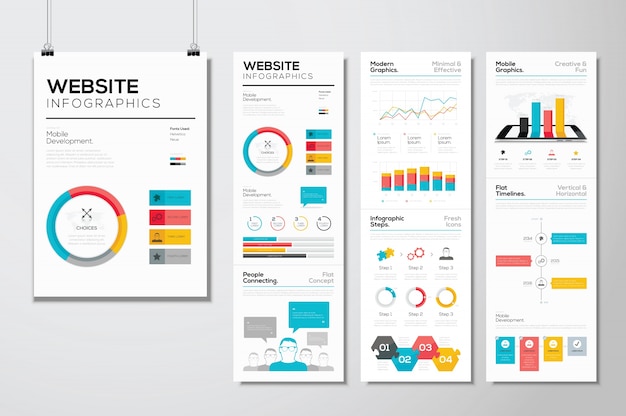Interested In Learning Exactly How Web Site Design Has Advanced? Take A Trip With The Transformation
Interested In Learning Exactly How Web Site Design Has Advanced? Take A Trip With The Transformation
Blog Article
Article Written By-Hartley Bojesen
In the past, websites were straightforward and focused on info. Navigation was straight, and design was for desktop computers. Now, user experience is essential. Information guides designs for easy navigation. Responsive designs match different tools. Today, dark mode minimizes strain, and minimalist food selections enhance navigation. Interactive features involve customers, and bold visuals stand out. AI combination improves interaction. See exactly how design has actually developed to enhance your on the internet trip.
Early Days of Web Design
In the very early days of website design, simplicity preponderated. Sites were standard, with minimal colors, font styles, and layouts. The focus got on giving information instead of flashy visuals. Customers accessed the net through sluggish dial-up connections, so rate and functionality were crucial.
Navigation food selections were straightforward, normally located on top or side of the page. Internet sites were made for computer, as mobile browsing wasn't yet widespread. Content was king, and designers focused on easy readability over complicated layout aspects.
HTML was the key coding language used, and designers had to function within its restrictions. Computer animations and interactive features were very little contrasted to today's requirements. Sites were fixed, with little vibrant web content or personalized user experiences.
Surge of User-Focused Style
With the development of website design, a change towards user-focused design concepts has become significantly noticeable. Today, producing sites that focus on customer experience is essential for involving visitors and achieving organization goals. User-focused design involves understanding the demands, preferences, and actions of your target audience to customize the internet site's design, content, and features appropriately.
Developers currently conduct thorough research study, such as individual surveys and functionality screening, to collect insights and feedback straight from individuals. This data-driven strategy assists in producing instinctive navigation, clear calls-to-action, and visually enticing user interfaces that reverberate with site visitors. By https://www.designerwomen.co.uk/new-strategic-report-on-digital-marketing-analytics-market-growth-analysis-and-forecast-to-2026/ at the center of the design process, web sites can supply a much more individualized and pleasurable experience.
Receptive style has actually also become an essential facet of user-focused style, making certain that websites are optimized for various devices and screen dimensions. This adaptability boosts availability and functionality, satisfying the diverse ways users interact with websites today. Fundamentally, the surge of user-focused style indicates a shift in the direction of producing digital experiences that focus on the demands and expectations of completion user.
Modern Trends in Web Design
Discover the most recent fads shaping web design today. One popular trend is dark setting style, using a sleek and contemporary appearance while minimizing eye stress in low-light settings. An additional key fad is minimalist navigation, streamlining menus and enhancing customer experience by concentrating on essential elements. Incorporating micro-interactions, such as computer animated switches or scrolling effects, can create a much more appealing and interactive internet site. Responsive layout continues to be vital, making sure smooth user experiences throughout different tools. In addition, making use of bold typography and asymmetrical designs can include visual interest and draw attention to specific content.
Integrating AI technology, like chatbots for consumer assistance or individualized suggestions, enhances individual engagement and simplifies procedures. Access has additionally become a significant trend, with designers focusing on comprehensive layout practices to accommodate varied user needs. Welcoming sustainability by enhancing internet site performance for speed and efficiency is another arising pattern in web design. Working together with customer responses and information analytics to iterate and improve layout constantly is crucial for remaining appropriate in the ever-evolving digital landscape. By accepting these contemporary patterns, you can produce a visually attractive, easy to use site that reverberates with your target market.
Final thought
As you reflect on the evolution of website layout from the very early days to now, you can see exactly how user-focused layout has come to be the driving pressure behind contemporary fads.
Welcome https://www.fool.com/the-ascent/small-business/articles/marketing-strategies/ of modification and adjustment in website design, always keeping the user experience at the leading edge.
Stay current with the most recent patterns and technologies, and never ever quit developing your approach to develop aesthetically magnificent and easy to use internet sites.
Evolve, adjust, and create - the future of web design remains in your hands.
